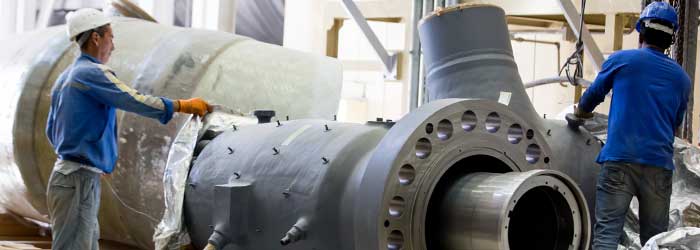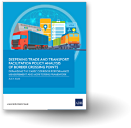Revisiting FDI and the international trade nexus
The relationship between international trade and FDI is unquestionably complex, and the findings of some empirical studies may often become subject to debate. An example is the complementarity or substitutability of FDI and trade at different levels of aggregation in the economy. Recent improvement in global economic outlook, largely due to better growth prospects in major economies and increase in trade flows, can be a boon for FDI. But as some countries pursue more inward looking economic policies, how would this bear on the link between international trade and investment?
The trade-boosting effects of FDI are front and center in the findings of a recent paper by Kang and Dagli (forthcoming). Results point to positive and significant effect of FDI on exports, at the bilateral and sector levels. This relationship is more prominent between OECD member economies and economies in developing Asia. In particular, FDI from an OECD member economy to developing Asian country results to higher exports from developing Asia to an OECD member economy. The positive impact of FDI on trade, suggests a complementarity between them. FDI from origin to host country can also be demand driven and market seeking, rather than cost-efficiency seeking. This type of FDI gives rise to horizontally-structured multinationals, which is more common in FDI within the EU, for instance.
The positive effect of FDI on exports apply to FDI that enters a foreign market either through building new assets (greenfield) or by acquiring existing companies (M&A). Using a novel dataset which combines FDI’s modes of entry under a harmonized sector classification, and also traces back FDI to the ultimate source, Kang and Dagli found evidence that greenfield FDI has higher impact on exports than M&A FDI. Moreover, even after controlling for regional bias in exports, FDI still has positive and significant effect on exports. This underscores that an economy can increase its exports by intensifying and attracting FDI activities, via greenfield and M&A, as well as across regions.
Global FDI flows fell by 13% in 2016 but a significant rebound is projected for emerging as well as developing economies in 2017 (UNCTAD 2017). Despite decline in FDI inflows to developing Asia in 2016 by 22% (falling to $413 billion), inflows to the PRC rose by 2.3%, and there was a rise in investments to the Republic of Korea, and to Pakistan.
Emerging economies are the bright spots for FDI. The PRC is vigorously attracting as well as seeking investments in developed and developing economies, as they also restructure towards domestic demand and consumption-driven economy. Foreign investment approval procedures and restrictions are gradually being relaxed in the PRC, and more free trade and special economic zones are to be opened up. The ‘Make in India’ investment pitch also proved successful in boosting FDI flows, with India surpassing the US and the PRC in value of inward greenfield FDI in 2015.
Improvements in institutional quality, business and regulatory environment, and policy effectiveness are necessary to attract FDI (Asian Economic Integration Report 2016). In particular, governance matters most in attracting M&A especially if the source is a high income economy.
One caveat of the empirical analysis is that it also finds that FDI from other partners (or a third country) may not necessarily lead to higher exports, and that the export promoting effect of FDI may be largely confined to its original source country. This suggests that FDI in developing economies may not be set-up as a production platform for exports to other countries. In this case, developing economies could get more out of bilateral investment treaties or incentives afforded to multinationals by encouraging not only export-promoting FDI (vertical FDI) but also global- and regional value chain FDI (GVC-FDI) which establishes the host as an export platform.
References:
ADB. 2016. Asian Economic Integration Report. Manila, Philippines.
Kang, J.W. and S. Dagli. Forthcoming. FDI and the international trade nexus.
United Nations Conference on Trade and Development. 2017. Global Investment Trends Monitor Issue No. 25. Geneva, Switzerland.
The relationship between international trade and FDI is unquestionably complex, and the findings of some empirical studies may often become subject to debate. An example is the complementarity or substitutability of FDI and trade at different levels of aggregation in the economy. Recent improvement in global economic outlook, largely due to better growth prospects in major economies and increase in trade flows, can be a boon for FDI. But as some countries pursue more inward looking economic policies, how would this bear on the link between international trade and investment?
The trade-boosting effects of FDI are front and center in the findings of a recent paper by Kang and Dagli (forthcoming). Results point to positive and significant effect of FDI on exports, at the bilateral and sector levels. This relationship is more prominent between OECD member economies and economies in developing Asia. In particular, FDI from an OECD member economy to developing Asian country results to higher exports from developing Asia to an OECD member economy. The positive impact of FDI on trade, suggests a complementarity between them. FDI from origin to host country can also be demand driven and market seeking, rather than cost-efficiency seeking. This type of FDI gives rise to horizontally-structured multinationals, which is more common in FDI within the EU, for instance.
The positive effect of FDI on exports apply to FDI that enters a foreign market either through building new assets (greenfield) or by acquiring existing companies (M&A). Using a novel dataset which combines FDI’s modes of entry under a harmonized sector classification, and also traces back FDI to the ultimate source, Kang and Dagli found evidence that greenfield FDI has higher impact on exports than M&A FDI. Moreover, even after controlling for regional bias in exports, FDI still has positive and significant effect on exports. This underscores that an economy can increase its exports by intensifying and attracting FDI activities, via greenfield and M&A, as well as across regions.
Global FDI flows fell by 13% in 2016 but a significant rebound is projected for emerging as well as developing economies in 2017 (UNCTAD 2017). Despite decline in FDI inflows to developing Asia in 2016 by 22% (falling to $413 billion), inflows to the PRC rose by 2.3%, and there was a rise in investments to the Republic of Korea, and to Pakistan.
Emerging economies are the bright spots for FDI. The PRC is vigorously attracting as well as seeking investments in developed and developing economies, as they also restructure towards domestic demand and consumption-driven economy. Foreign investment approval procedures and restrictions are gradually being relaxed in the PRC, and more free trade and special economic zones are to be opened up. The ‘Make in India’ investment pitch also proved successful in boosting FDI flows, with India surpassing the US and the PRC in value of inward greenfield FDI in 2015.
Improvements in institutional quality, business and regulatory environment, and policy effectiveness are necessary to attract FDI (Asian Economic Integration Report 2016). In particular, governance matters most in attracting M&A especially if the source is a high income economy.
One caveat of the empirical analysis is that it also finds that FDI from other partners (or a third country) may not necessarily lead to higher exports, and that the export promoting effect of FDI may be largely confined to its original source country. This suggests that FDI in developing economies may not be set-up as a production platform for exports to other countries. In this case, developing economies could get more out of bilateral investment treaties or incentives afforded to multinationals by encouraging not only export-promoting FDI (vertical FDI) but also global- and regional value chain FDI (GVC-FDI) which establishes the host as an export platform.
References:
ADB. 2016. Asian Economic Integration Report. Manila, Philippines.
Kang, J.W. and S. Dagli. Forthcoming. FDI and the international trade nexus.
United Nations Conference on Trade and Development. 2017. Global Investment Trends Monitor Issue No. 25. Geneva, Switzerland.

 Suzette Dagli is a Senior Economic Analyst at the Economic Research and Regional Cooperation Department of the Asian Development Bank
Suzette Dagli is a Senior Economic Analyst at the Economic Research and Regional Cooperation Department of the Asian Development Bank



